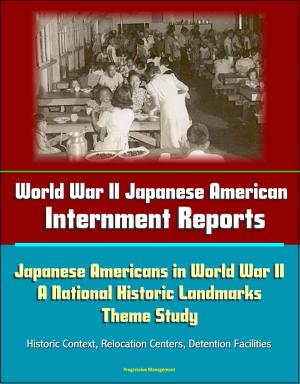Amphibious Landing Operations in World War II: Personal Experience in Applying and Developing Doctrine - Lucian Truscott's Leadership in Operations Torch and Husky and the Third Infantry Division
Nonfiction, History, Military, Naval, World War II| Author: | Progressive Management | ISBN: | 9781370141715 |
| Publisher: | Progressive Management | Publication: | February 11, 2017 |
| Imprint: | Smashwords Edition | Language: | English |
| Author: | Progressive Management |
| ISBN: | 9781370141715 |
| Publisher: | Progressive Management |
| Publication: | February 11, 2017 |
| Imprint: | Smashwords Edition |
| Language: | English |
This excellent report has been professionally converted for accurate flowing-text e-book format reproduction. The United States Army and Navy conducted amphibious landing operations in multiple wars throughout their histories with varying levels of success. Early amphibious landing doctrine was a joint-effort between the services, but a divergence in purpose drove them apart prior to World War II. Soon after the United States entered the War, the Army and Navy would work together again, but the division in amphibious landing experience and doctrine was enough to cause concern among leaders. The Army had to meet the challenge of overcoming rapid expansion and a lack of institutional or personal experience in conducting large-scale amphibious operations.
At the forefront of the Army's effort to gain experience planning and conducting amphibious landings was Lucian K. Truscott, Jr., a Cavalry officer by training. Following his assignment to the Combined Operations Headquarters, Truscott planned and led units in nearly every large-scale landing in the Mediterranean Theater of Operations from the brigade to corps level. Following World War II, he continued to influence amphibious landing doctrine. This monograph compares Truscott's personal experiences and the doctrine used by the Army to determine points of friction and explores the current lack of amphibious landing doctrine given the Army's history, potential threats, and future concepts.
Amphibious landing operations have a firm foundation in the history of warfare and, more particularly, in the history of American warfare. The paragraphs above provide examples of the utility of amphibious landings during warfare and the cost of forgetting those lessons. These lessons led to the Army and Navy initially conducting improvements together. However, the service's viewpoints for conducting amphibious landings eventually drove them apart. The Army viewed amphibious landings as the initial phase of a longer land campaign. The Navy and its subordinate arm, the Marine Corps, viewed amphibious landings as a means to increase the operational reach of a fleet. The doctrine each developed trended in those directions. World War II, however, forced the services to conduct joint operations toward common strategic objectives. This monograph explores the evolution of Army doctrine for conducting amphibious landing operations and shows the adaptations made to counter challenges landing forces faced.
This excellent report has been professionally converted for accurate flowing-text e-book format reproduction. The United States Army and Navy conducted amphibious landing operations in multiple wars throughout their histories with varying levels of success. Early amphibious landing doctrine was a joint-effort between the services, but a divergence in purpose drove them apart prior to World War II. Soon after the United States entered the War, the Army and Navy would work together again, but the division in amphibious landing experience and doctrine was enough to cause concern among leaders. The Army had to meet the challenge of overcoming rapid expansion and a lack of institutional or personal experience in conducting large-scale amphibious operations.
At the forefront of the Army's effort to gain experience planning and conducting amphibious landings was Lucian K. Truscott, Jr., a Cavalry officer by training. Following his assignment to the Combined Operations Headquarters, Truscott planned and led units in nearly every large-scale landing in the Mediterranean Theater of Operations from the brigade to corps level. Following World War II, he continued to influence amphibious landing doctrine. This monograph compares Truscott's personal experiences and the doctrine used by the Army to determine points of friction and explores the current lack of amphibious landing doctrine given the Army's history, potential threats, and future concepts.
Amphibious landing operations have a firm foundation in the history of warfare and, more particularly, in the history of American warfare. The paragraphs above provide examples of the utility of amphibious landings during warfare and the cost of forgetting those lessons. These lessons led to the Army and Navy initially conducting improvements together. However, the service's viewpoints for conducting amphibious landings eventually drove them apart. The Army viewed amphibious landings as the initial phase of a longer land campaign. The Navy and its subordinate arm, the Marine Corps, viewed amphibious landings as a means to increase the operational reach of a fleet. The doctrine each developed trended in those directions. World War II, however, forced the services to conduct joint operations toward common strategic objectives. This monograph explores the evolution of Army doctrine for conducting amphibious landing operations and shows the adaptations made to counter challenges landing forces faced.















